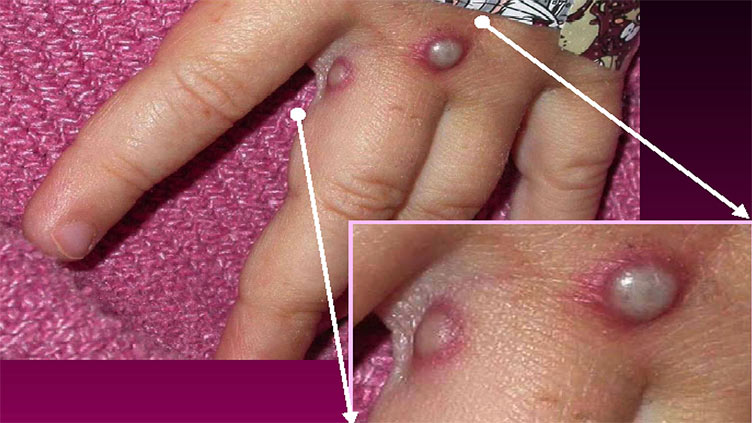Monkeypox outbreak: everything you need to know

Monkeypox outbreak: everything you need to know
(Web Desk) - States, suggesting the smallpox-related virus is spreading locally rather than popping up due to travel to countries where the virus is endemic — primarily Central and West Africa.
And unlike the coronavirus causing COVID-19, this outbreak of monkeypox seems to be spreading from intimate contact. "What seems to be happening now is that it has got into the population as a sexual form, as a genital form, and is being spread as are sexually transmitted infections, which has amplified its transmission around the world," David Heymann, an infectious disease epidemiologist and World Health Organization (WHO) expert.
What is Monkeypox?
Monkeypox is a disease caused by the monkeypox virus (genus Orthopoxvirus). The virus is closely related to other "pox" viruses such as vaccinia, variola major and minor (which cause smallpox) and cowpox virus, according to the Centers for Disease Control and Prevention (CDC).
Monkeypox was first identified in 1958 in monkey colonies, and then again in 1970 in a human in what is now the Democratic Republic of the Congo. In subsequent years, monkeypox outbreaks have cropped up in areas across Central and West Africa, according to the CDC.
Signs and symptoms
After the virus enters the body, it starts to replicate and spread through the body via the bloodstream. Symptoms usually don t appear until one to two weeks after infection.
Monkeypox produces smallpox-like skin lesions, but symptoms are usually milder than those of smallpox. Flu-like symptoms are common initially, ranging from fever and headache to shortness of breath.
One to 10 days later, a rash can appear on the extremities, head or torso that eventually turns into blisters filled with pus. Overall, symptoms usually last for two to four weeks, while skin lesions usually scab over in 14 to 21 days.
While monkeypox is rare and usually non-fatal, one version of the disease kills around 10 percent of infected people. The form of the virus currently circulating is thought to be milder, with a fatality rate of less than 1 percent.
Transmission
The virus can be transmitted through contact with an infected person or animal or contaminated surfaces. Typically, the virus enters the body through broken skin, inhalation or the mucous membranes in the eyes, nose or mouth.
Researchers believe that human-to-human transmission is mostly through inhalation of large respiratory droplets rather than direct contact with bodily fluids or indirect contact through clothes. Human-to-human transmission rates for monkeypox have been limited.
Health officials are worried the virus may currently be spreading undetected through community transmission, possibly through a new mechanism or route. Where and how infections are occurring are still under investigation.
Vaccines and treatments
Treatment for monkeypox is primarily focused on relieving symptoms. According to the CDC, no treatments are available to cure monkeypox infection.
Evidence suggests that the smallpox vaccine can help prevent monkeypox infections and decrease the severity of the symptoms. One vaccine known as Imvamune or Imvanex is licensed in the US to prevent monkeypox and smallpox.
Vaccination after exposure to the virus may also help decrease chances of severe illness. The CDC currently recommends smallpox vaccination only in people who have been or are likely to be exposed to monkeypox. Immunocompromised people are at high risk. The Conversation.
Is Monkeypox fatal?
Monkeypox generally runs its course, resolving on its own, over a period of two to four weeks, according to the World Health Organization. However, severe cases can occur, and today about 3% to 6% of those infected with the disease die from it, the WHO noted. The risk of death is higher among young children. Individuals younger than about 40 to 50 years of age may also be more vulnerable to monkeypox because smallpox vaccinations — which help protect a person from contracting monkeypox — stopped after that disease was eradicated, at different times in different countries.
The current cases of monkeypox seem to be genetically related to the variant that spreads predominantly in West Africa, and is less fatal — with a case fatality rate of around 1% in these remote regions, Nature News reported.


